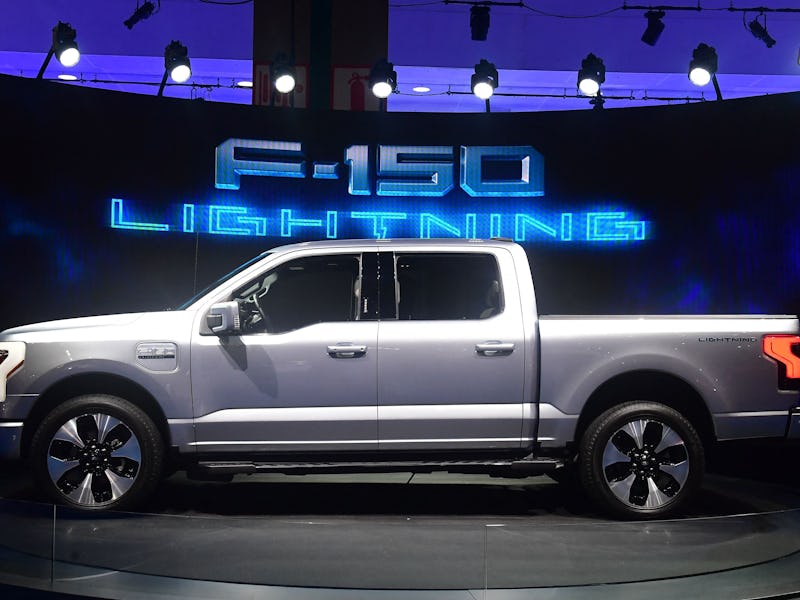Electric vehicles are too expensive. Here are 6 ways to make them cheaper.
Our government has the power to lower EV prices with some simple and equitable changes.

As an environmentalist who totes kids around town, I would love to buy an electric car. But here in South Carolina, the cheapest electric vehicles are at least three times as expensive as my used VW Jetta. What about those big government subsidies, you ask? The truth is that EV subsidies overwhelmingly benefit the rich, not moderate-income people like me.
The US federal government will give you up to a $7,500 tax credit for an EV, but you only get this money at tax time, and you only get it all if you pay a lot in taxes. In 2016, 78 percent of federal EV tax credits went to taxpayers with incomes over $100,000.
My research has shown that most of these tax credits, as well as state subsidies, are paid out to consumers who would have bought the EV even without the extra benefit. And often, they go to people who treat them as additional cars rather than replacements for gas guzzlers, or who don’t drive them often enough to make the gas savings outweigh the environmental cost of making the car in the first place.
This is a waste of government money.
IMAGE
In the face of climate change, we need to accelerate the transition to electric transport (assuming the U.S. makes enough renewable electricity to power it). The Biden administration’s goal is for EVs to account for 50 percent of new car sales by 2030, but the current share is less than five percent. Subsidies as they stand aren’t helping to get enough new EVs on the road. They are also unfair to poor communities.
Lower-income households already suffer more from the poor air quality that comes from tailpipe emissions. They also pay a larger share of their household budgets on gasoline, and so could reap more savings from driving EVs if they could only afford them.
Here are six things that policymakers could do to make EV subsidies more effective and more equitable:
1. Place a price cap on eligible vehicles
The point is to get more EVs on the road, not to get luxury cars on the road. This would free up more funds to target lower- and moderate-income households. Some places are doing this already. Since 2019, California has had a price cap of $60,000, which it recently lowered to $45,000 for passenger cars, qualifying popular models like the Nissan Leaf, Chevrolet Bolt, and the base Tesla Model 3, but disqualifying most luxury EVs and higher-end Teslas. A $40,000 cap sounds reasonable to me.
2. Ramp up subsidies for lower-income households that couldn’t otherwise afford EVs (and eliminate them for the highest-income households).
California has also been doing this for several years. My research on one of the state’s pilot programs found that increasing EV rebates for lower-income households improved program cost-effectiveness by 1.7 times while increasing subsidies for the lowest-income households from $2,500 to $9,500. Just this year, Oregon substantially increased its rebates for low- and moderate-income households; other states, and countries, should follow suit.
3. Give the subsidies closer to the point of sale — through a rebate, for example.
Lower-income households often can’t claim much of the benefit of income tax credits (because their income is low) and are more sensitive to upfront costs. Subsidies shouldn’t make them wait. Many states do offer rebates, including California, Connecticut, Delaware, Illinois, New Jersey, New York, Oregon, and Pennsylvania. Others should do the same.
4. Offer cheaper loans.
Making subsidized, government-backed loans available to lower-income households with poor credit could help them access reasonable financing for EVs at a relatively low cost to the government. After piloting such a program, California has recently partnered with a lender to offer loans with a maximum interest rate of 8 percent regardless of credit history.
5. Scale subsidies by mileage.
To maximize the environmental benefits of EVs, ideally, they’d be driven by people who drive the most. This might also help with equity: Since lower-income consumers often can’t afford to live in urban cores, they can face longer commuting distances. This would be a trickier policy to implement. One option would be post-purchase annual “bonus” subsidies based on the EV odometer. So far, I’m not aware of anyone trying this out; it’s worth experimenting.
6. Subsidize used EVs.
Until recently, subsidies were entirely for new EVs. Subsidizing used EVs makes them much more accessible. Such policies need to be designed with care to prevent sellers from jacking up prices. California, Connecticut, Oregon, and Pennsylvania have recently started offering subsidies for pre-owned EVs.
EV subsidies have a huge potential to get more EVs on the road.
The Biden administration’s proposed Build Back Better bill incorporated some of the above suggestions in a weak way (eliminating subsidies for households making over $500,000 and for EVs costing over $55,000). But that bill died earlier this year. Biden has now pivoted towards promoting domestic battery manufacturing. I’m not sure that will move the needle on domestic EV production, nor pass any savings on to the consumer.
EV subsidies have a huge potential to get more EVs on the road and improve equity without spending any more money. They are one of the few decarbonization policy tools that are both politically palatable and popular with consumers in many areas. But they need a radical overhaul to get gas-guzzlers off the road and meet climate targets.
This article originally appeared in Knowable Magazine, an independent journalistic endeavor from Annual Reviews. Sign up for the newsletter.